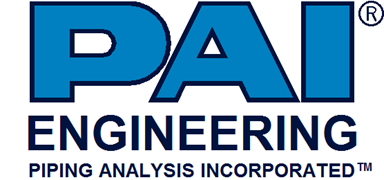Vibrations can play a major role in maintenance costs and lead to machinery and piping system failures.
Vibrations are undesirable in most systems and cause cumulative fatigue damage. Vibrations are especially insidious because, depending on their amplitude and frequency, they can cause almost instant failures or cracks. Some vibrations may never lead to an open failure, but can wreak havoc on rotating equipment such as pumps, turbines and compressors. Vibrations can be responsible for initiating cracks and/or for propagating a crack which has already developed.
Cracks that are the result of vibrations generally begin at stress concentration locations where geometry shape changes occur, and especially where flaws in welds or materials exist. Vibrations are generally either fluid flow induced (internally or externally) or driven by connected reciprocating machinery.
Through our years of experience, training, proprietary techniques, and computer programs listed below, we have the capability to solve problems such as modal analysis of multi-degree-of-freedom piping systems, “Von Karman” vortex shedding analysis, duct ovalizing frequencies and many other technically challenging problems.
Bentley AutoPIPE © calculates static and dynamic response properties of complex piping systems and structures using finite element techniques, and solves one-dimensional transient heat transfer problems for piping. The program can be used to analyze a wide variety of problems. The static capability includes the computation of piping and structural deformations and member loads and stress caused by an arbitrary set of thermal loads, applied loads, and displacements. The dynamic capabilities include mode shapes and natural frequencies, response spectra, phased harmonic load analysis, time history dynamic analysis and force spectra analysis. For modal analysis, AutoPIPE can automatically insert mass points along elements. AutoPIPE provides built- in fluid transient synthesizers for calculation of waterhammer, steamhammer, and relief valve forces, which are integrated with time history dynamic analysis. The computational method is beam element FEA. Stresses are calculated in accordance with first principles of stress analysis, the Huber, von Mises, Hencky failure theory, and the Tresca failure theory as required by the ASME piping and vessel codes, including subsections for nuclear piping and components.
For more information: +1 (225) 292 9709

